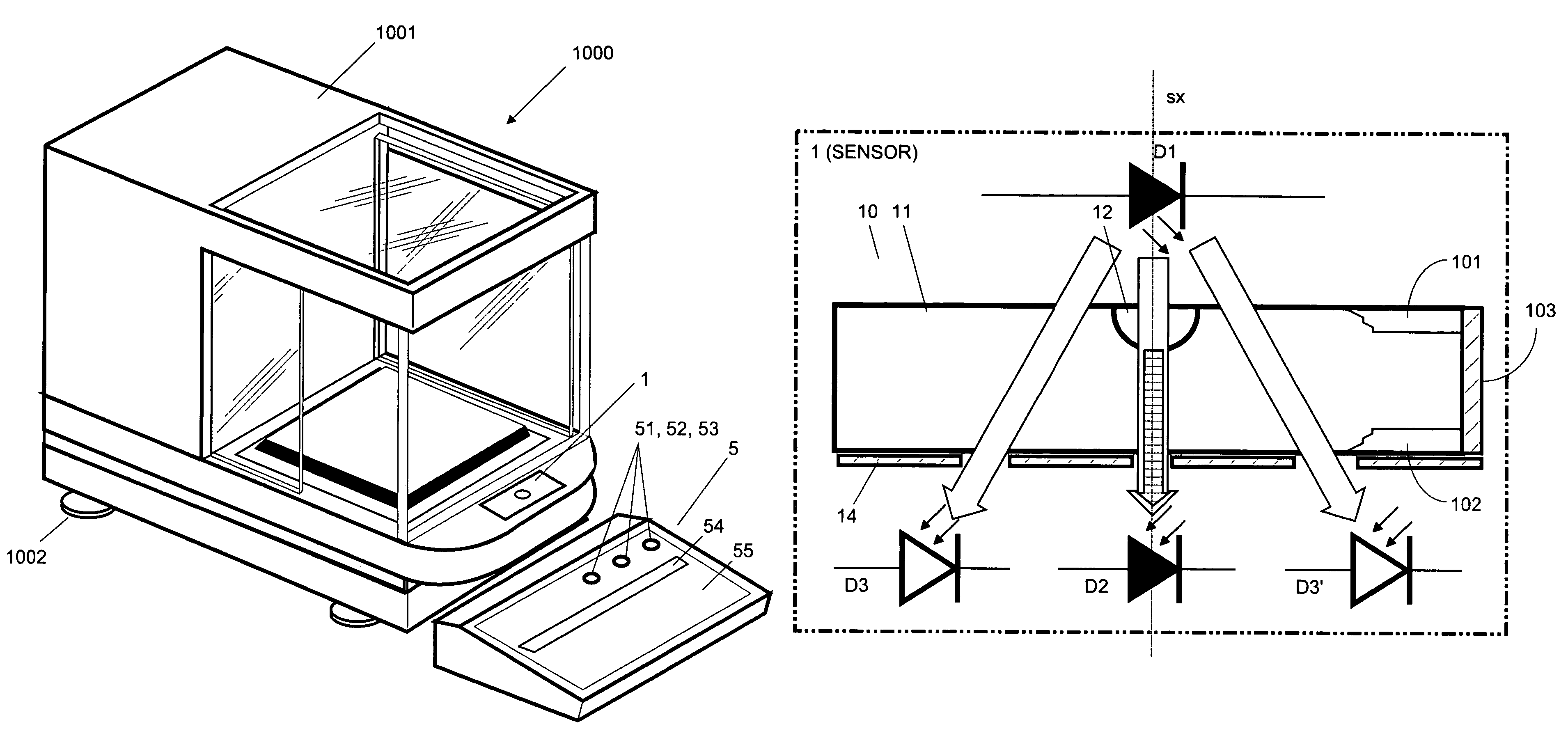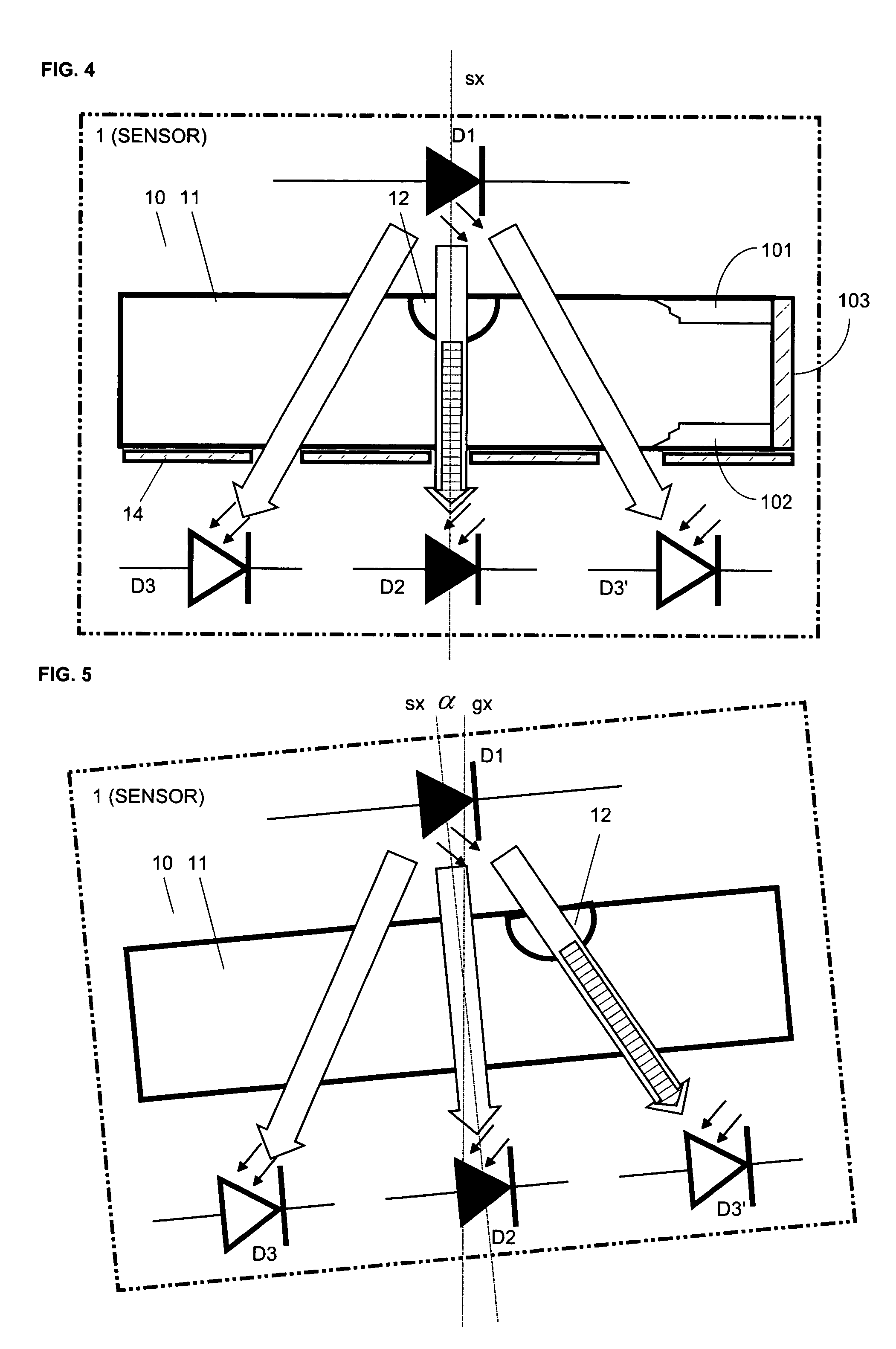Method and device for monitoring the alignment of a measuring instrument, and measuring instrument
a technology for measuring instruments and alignments, applied in the direction of instruments, weighing apparatus details, weighing apparatuses, etc., can solve the problems of failure of monitoring devices, both kinds of errors can have serious consequences, and the rule is not always adhered to in practice, so as to achieve cost-effective design, simple configuration, and precise detection
- Summary
- Abstract
- Description
- Claims
- Application Information
AI Technical Summary
Benefits of technology
Problems solved by technology
Method used
Image
Examples
Embodiment Construction
is presented below with reference to the drawings, wherein:
[0039]FIG. 1 represents a balance 1000 in accordance with the invention, with an inclination sensor 1 that is integrated in the balance housing in such a way that it is visible to the user;
[0040]FIG. 2 represents an inclination sensor 1′ whose sensor axis sx is aligned with the axis gx of the gravity force and which consists of a spirit level with a cylindrical container 10 that is closed off at both ends by transparent plates and filled with a liquid 11 leaving a bubble 12, with a radiation-emitting element D1 arranged above and a sensor element D2 arranged below the inclination sensor;
[0041]FIG. 3 represents the inclination sensor 1′ of FIG. 2 in an inclined position tilted to the right;
[0042]FIG. 4 represents an inclination sensor 1 in accordance with the invention consisting of a spirit level analogous to FIG. 2, with a radiation-emitting element D1 arranged above and a sensor element D2 as well as two reference elements...
PUM
 Login to View More
Login to View More Abstract
Description
Claims
Application Information
 Login to View More
Login to View More - R&D
- Intellectual Property
- Life Sciences
- Materials
- Tech Scout
- Unparalleled Data Quality
- Higher Quality Content
- 60% Fewer Hallucinations
Browse by: Latest US Patents, China's latest patents, Technical Efficacy Thesaurus, Application Domain, Technology Topic, Popular Technical Reports.
© 2025 PatSnap. All rights reserved.Legal|Privacy policy|Modern Slavery Act Transparency Statement|Sitemap|About US| Contact US: help@patsnap.com



